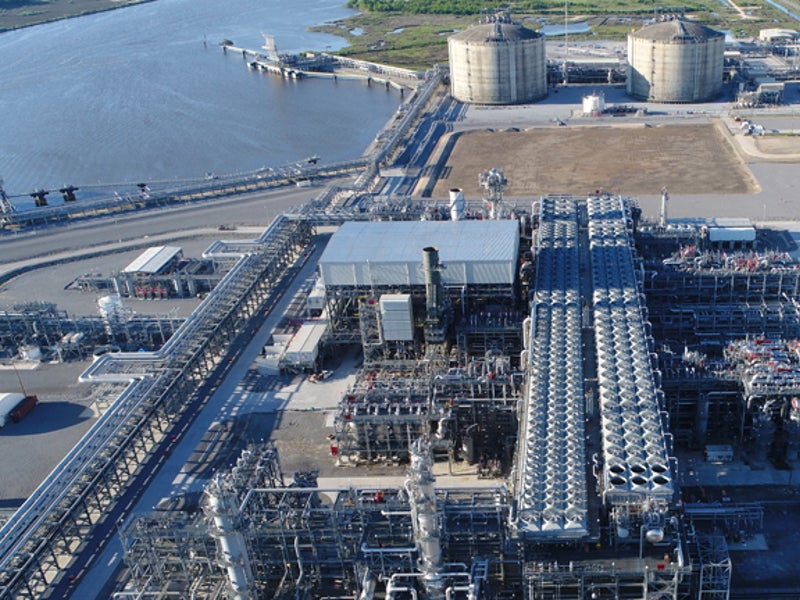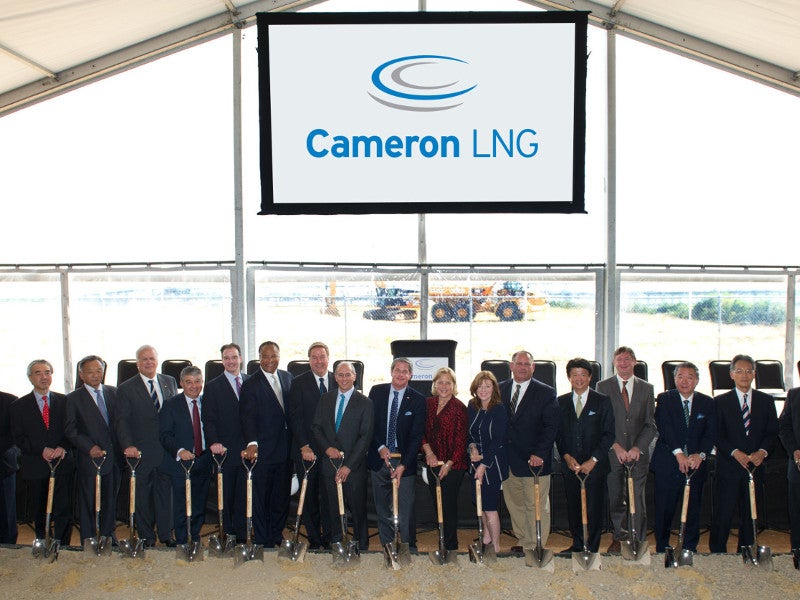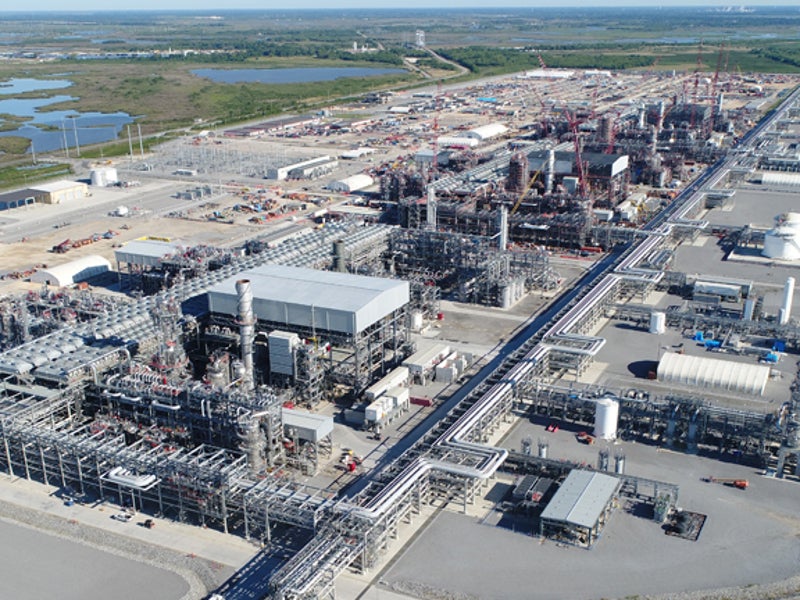Cameron LNG project is a 13.5 million tonnes per annum (Mtpa) liquefied natural gas (LNG) export facility under construction in Louisiana, US.
The $10bn project is being developed by Cameron LNG, a special consortium company jointly owned by Sempra LNG and Midstream (50.2%), Total (16.6%), Mitsui (16.6%), and Japan LNG Investment (16.6%).
Japan LNG Investment is a joint venture between Mitsubishi Corporation and Nippon Yusen Kabushiki Kaisha (NYK).
The Cameron LNG export project is planned to be developed in two phases with the phase one involving three LNG trains of 4.5Mtpa capacity each.
The first liquefaction train at the facility commenced commercial production in August 2019, while the second train started commercial operations in March 2020.
The third train, currently under construction, is expected to come on stream in the third quarter of 2020.
Cameron LNG project location and site details
The new LNG export facility is situated along the Calcasieu Channel in the town of Hackberry, in close proximity to Venture Global’s Calcasieu Pass LNG export terminal site. It is being developed on a 203.2ha-site at the periphery of Cameron Parish.
Sempra Energy had developed the Cameron LNG import and regasification terminal with an investment of $900m on the same site, which was brought into operation in 2009.
The LNG import terminal is being redeveloped into a liquefaction and export terminal by leveraging some of the existing infrastructure facilities.
Cameron LNG project background and development details
Cameron LNG export project was conceived in 2010, while its permit application was filed with the US Federal Energy Regulatory Commission (FERC) in December 2013.
The project received FERC approval in June 2014, while the US Department of Energy (DOE) granted two separate authorizations to export 12Mtpa and 2.95Mtpa of LNG from the project to the countries that have Free Trade Agreement (FTA) in January 2012 and April 2015, respectively.
The DOE also issued authorization for exporting 12Mtpa of LNG from the project to non-FTA countries in September 2014.
The developers reached the final investment decision (FID) on the project in August 2014, while the ground-breaking for the LNG export project took place in October 2014.
Cameron LNG submitted the environmental assessment report for the second phase development of the project to add the fourth and fifth LNG trains of 4.98Mtpa capacity each, in September 2015.
Cameron LNG plant details
The first phase of the Cameron LNG processing and export facility will include three 4.5Mtpa liquefaction trains, one new 160,000m³ full-containment LNG storage tank, and three existing storage tanks of similar capacity built for the Cameron LNG import facility.
The facility also includes refrigerant and condensate product storage tanks along with a truck loading area.
The planned second phase development will include two 4.98Mtpa LNG trains along with a 160,000m³ storage tank, two boil-off gas compressor units, two liquid nitrogen storage tanks, and one diesel and one condensate storage tank.
The existing marine facility for the import terminal, which includes two berths for LNG vessels, LNG loading arms, and other associated infrastructures, is being utilized for the LNG export operations at the terminal.
Feed gas supply
Natural gas for the Cameron LNG project is sourced through a new 34km-long and 42in-diameter pipeline expansion on the Cameron Interstate Pipeline system that interconnects with the Florida Gas transmission (FGT) and Trunkline gas pipelines.
LNG off-take
Toho Gas entered a 20-year sales and purchase agreement with Mitsui to off-take 300,000 tonnes per annum (tpa) of LNG from the Cameron LNG export terminal in January 2014.
Tokyo Gas signed a 20-year sales and purchase agreement with Mitsui to purchase 520,000tpa of LNG from the Cameron facility in July 2014.
Toho Gas signed another agreement with Diamond Gas International, a subsidiary of Mitsubishi, for the off-take of 200,000tpa of LNG from the project in June 2016.
Financing
In August 2014, Cameron LNG secured $7.4bn of project financing from the Japan Bank for International (JBIC) and Nippon Export and Investment Insurance (NEXI), along with a group of 29 commercial banks.
Contractors involved
A consortium of CB&I (now McDermott) and Chiyoda was awarded the $6bn engineering, procurement, and construction (EPC) contract for the Cameron LNG export terminal in March 2014.
Global Engineering and Construction Group, a subsidiary Foster Wheeler, was appointed as the owner’s engineer for the Cameron LNG project in April 2012.
Emerson was selected to provide automation technologies for the liquefaction plant, under a $20m contract awarded in February 2016.





